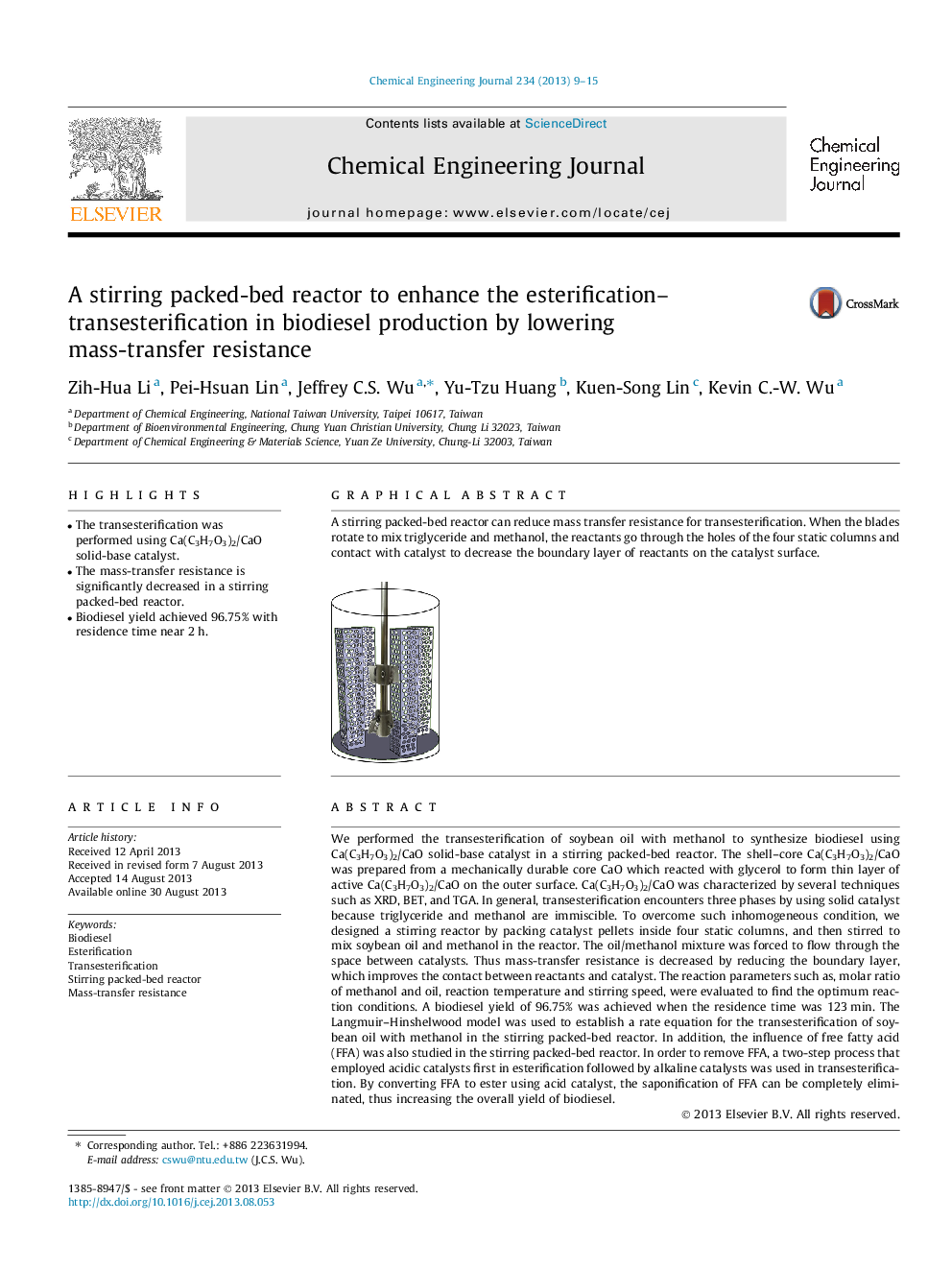| کد مقاله | کد نشریه | سال انتشار | مقاله انگلیسی | نسخه تمام متن |
|---|---|---|---|---|
| 148093 | 456405 | 2013 | 7 صفحه PDF | دانلود رایگان |

• The transesterification was performed using Ca(C3H7O3)2/CaO solid-base catalyst.
• The mass-transfer resistance is significantly decreased in a stirring packed-bed reactor.
• Biodiesel yield achieved 96.75% with residence time near 2 h.
We performed the transesterification of soybean oil with methanol to synthesize biodiesel using Ca(C3H7O3)2/CaO solid-base catalyst in a stirring packed-bed reactor. The shell–core Ca(C3H7O3)2/CaO was prepared from a mechanically durable core CaO which reacted with glycerol to form thin layer of active Ca(C3H7O3)2/CaO on the outer surface. Ca(C3H7O3)2/CaO was characterized by several techniques such as XRD, BET, and TGA. In general, transesterification encounters three phases by using solid catalyst because triglyceride and methanol are immiscible. To overcome such inhomogeneous condition, we designed a stirring reactor by packing catalyst pellets inside four static columns, and then stirred to mix soybean oil and methanol in the reactor. The oil/methanol mixture was forced to flow through the space between catalysts. Thus mass-transfer resistance is decreased by reducing the boundary layer, which improves the contact between reactants and catalyst. The reaction parameters such as, molar ratio of methanol and oil, reaction temperature and stirring speed, were evaluated to find the optimum reaction conditions. A biodiesel yield of 96.75% was achieved when the residence time was 123 min. The Langmuir–Hinshelwood model was used to establish a rate equation for the transesterification of soybean oil with methanol in the stirring packed-bed reactor. In addition, the influence of free fatty acid (FFA) was also studied in the stirring packed-bed reactor. In order to remove FFA, a two-step process that employed acidic catalysts first in esterification followed by alkaline catalysts was used in transesterification. By converting FFA to ester using acid catalyst, the saponification of FFA can be completely eliminated, thus increasing the overall yield of biodiesel.
A stirring packed-bed reactor can reduce mass transfer resistance for transesterification. When the blades rotate to mix triglyceride and methanol, the reactants go through the holes of the four static columns and contact with catalyst to decrease the boundary layer of reactants on the catalyst surface.Figure optionsDownload as PowerPoint slide
Journal: Chemical Engineering Journal - Volume 234, December 2013, Pages 9–15